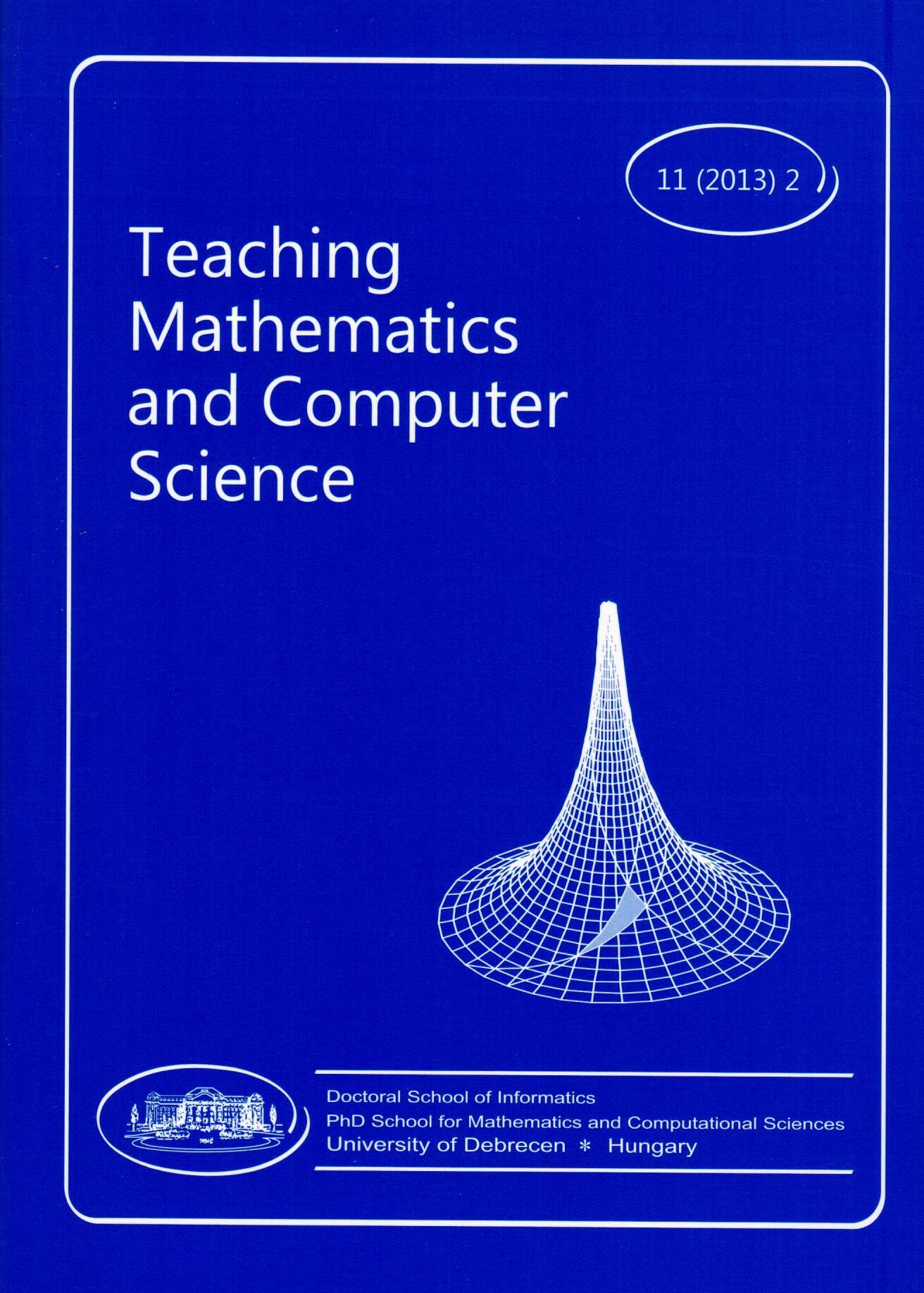Vol. 11 No. 2 (2013)
Published
2013 December 1
##issue.tableOfContents##
Articles
-
Building a virtual framework to exploit multidisciplinary project workshops – peaks & pits
147-164Views:108Multidisciplinary project work in connection to industry is highly favoured at University education, since it prepares students to envision their spectrum of profession, to be able to participate in production projects in co-operation with partners out of campus, and learn to communicate between disciplines. An effctive combination presumes selection of right partners, set-up of proper virtual platform to bridge time, space, and diffrences in working styles. The set-up process requires several phases of design-based research proofing the melding process to produce a productive workshop that is sustainable. The paper describes the review of literature, the platform and set-up established, a first phase in bridging Art and Computer Science through the description of MOMELTE project, a critical evaluation in order to learn from mistakes, and a new list of design principles to improve the next phase of the workshop process.PDF63 -
Motivating students with projects encompassing the whole duration of their studies
165-180Views:101Based on my ten years of teaching experience at the University of Debrecen, I can say that students majoring Software Information Technology BSc have to face a number of difficulties during their studies. I think these difficulties root from two main problems: students are unmotivated and cannot sense the coherence between the knowledge acquired in the various courses. This paper tries to give some alleviation to both of these problems by the idea of introducing some long-term projects to students, which they can work on throughout their studies, dealing with a particular aspect of the projects in each course.PDF44 -
Analysis of a problem in plane geometry discussed in an 11th grade group study session
181-193Views:100The main aim of this paper is to show those strategies and proof methods we try to teach in secondary maths education through an interesting geometric problem: Find a relation for the sides of a triangle where an angle is the double of another angle. Is the converse also true? Is it possible to generalize the problem? We try to answer these questions while discussing the upcoming difficulties in detail and presenting more possible solutions. Hopefully the paper can be successfully used in study group sessions and problem solving seminars in secondary schools.PDF79 -
A didactic analysis of merge sort
195-210Views:120Due to technical difficulties, educators teaching merge sort often avoid the analysis of the cost in the general and average cases. Using basic discrete mathematics, elementary real analysis and mathematical induction, we propose a self-contained derivation of bounds αn log_2 n + βn + γ in all cases. Independent of any programming language or pseudo-code, supported by intuitive figures, it is suitable for informatics students interested in the analysis of algorithms. It is also a good exercise in showing that induction allows us to actually discover constants, instead of simply checking them a posteriori.PDF88 -
Development of spatial perception in high school with GeoGebra
211-230Views:112In everyday life, on numerous occasions we need to project 3D space onto a plane in order to activate our spatial perception. While our ability in this area can be improved, and considering several national and international research results, the development is even necessary on all levels of education. GeoGebra, as a supplement to previously used tools, has proven to be very useful respective to the development. We have many possibilities to display spatial elements in GeoGebra and to apply such kind of worksheets among 15-18 year old students. I show the results of the 2011/2012 school years connected to the development of spatial perception and the results of an input case survey, which also justifies the need for development.PDF93 -
The study of sequences defined by a first order recursion by means of a pocket calculator
231-240Views:112This paper will present the way we can use a simple pocket calculator to teach mathematics. Namely, a pocket calculator can be very useful to study the properties of sequences defined by first order recursion (e.g. monotonicity, boundedness and convergence) and to gain a deeper understanding.PDF56 -
Powers which commute or associate as solutions of ODEs
241-254Views:109This paper is dedicated to the two classical transcendental functions: The locus of points for which powers commute, and the locus of points for which powers associate. These classical functions however are considered in a new perspective: as holomorphic solutions of ODEs passing over the points of singularity of these ODEs.
Generally, solution functions which are holomorphic at singular points of the phase space of ODEs were studied in [2,3], and it was shown in [3], that certain holomorphic functions may satisfy only singular rational ODEs. This is the frame in which the function of commuting or associating powers are considered in this paper.
First we obtain several types of ODEs satisfied by these functions. The obtained ODEs happen to have singular points, yet the solutions are proved to be holomorphic at these points, and their Taylor expansions are obtained. However it is not yet known whether these two transcendental functions can satisfy a regular rational ODE at the respective special points. The article also poses an open question about remarkable inequalities related to the commuting powers.PDF62 -
On the past of a famous theorem: the predecessors of a theorem of Pythagoras
255-267Views:135The well-known Theorem of Pythagoras asserts a relation among the sides of any right-angled triangle. It can be found any secondary school textbook. An interesting question whether this result due to the Pythagoreans from the VIth century BC, or it was known in earlier civilizations. The first answer is a vague yes. According to the legends the Egyptian rope-stretchers used a triangle with sides 3,4,5 units to create right angle. But are there real evidences that this result was known earlier? We will argue that in almost all river-valley civilizations it was known and used.PDF100
Keywords
Issues by Year
2020
2017
2011
2010
2009
2007
2006
2005
2004
2003







